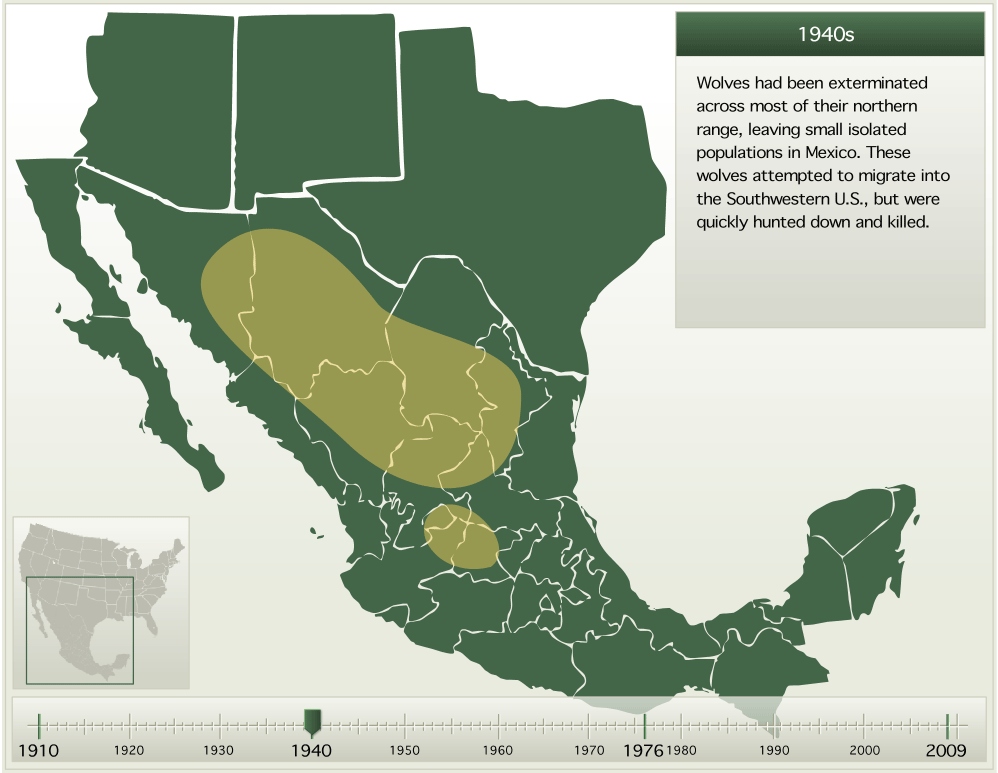Gray wolves (Canis lupus) migrated to North America from eastern Siberia across the Bering land bridge during the Ice Age. Mexican gray wolves (Canis lupus baileyi) evolved in the Southwest as gray wolves dispersed from north to south across North America. They were a part of the natural landscape when humans first arrived over 10,000 years ago. They roamed in suitable habitats throughout Arizona, New Mexico, southern Utah and Colorado, western Texas, and northern Mexico from around the present-day location of Interstate 40 south to near Mexico City.
Using a line to demarcate the edge of a subspecies range is always problematic for nomadic species. Genetic research has found evidence of Mexican wolf genetic markers in Utah and Colorado. Areas to the north were likely a “mixing zone” for subspecies from the north and south. According to peer reviewed research by wolf experts appointed by the U.S. Fish and Wildlife Service to the Science and Planning Subgroup of the Mexican wolf recovery plan team, the four corners states – Arizona, Colorado, New Mexico, and Utah – are all essential for Mexican wolf recovery.







